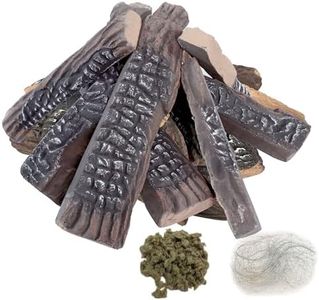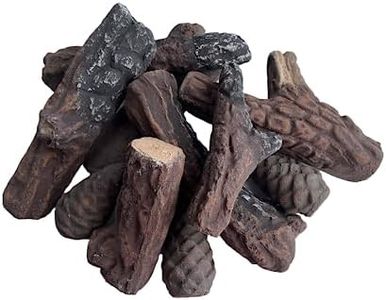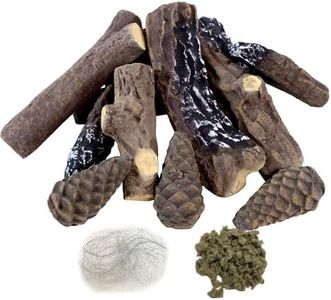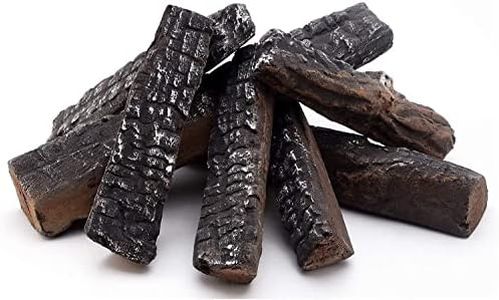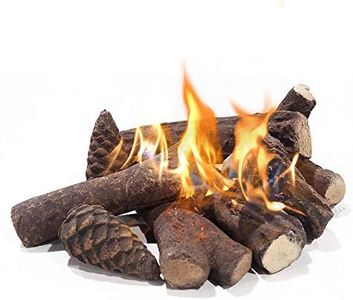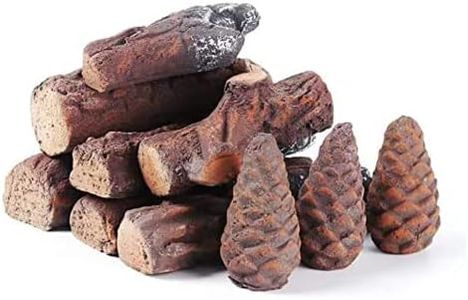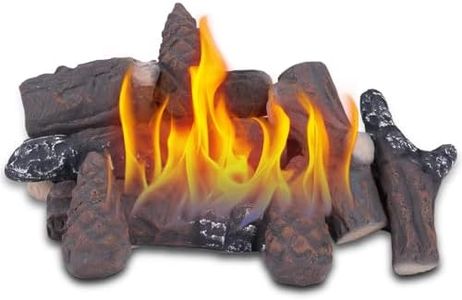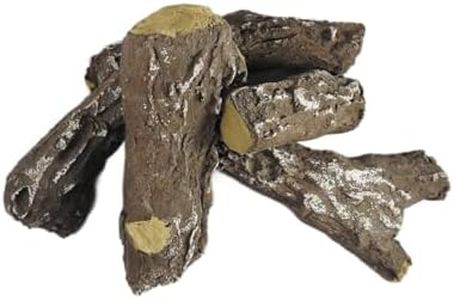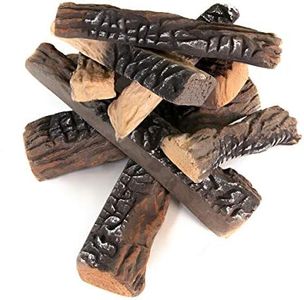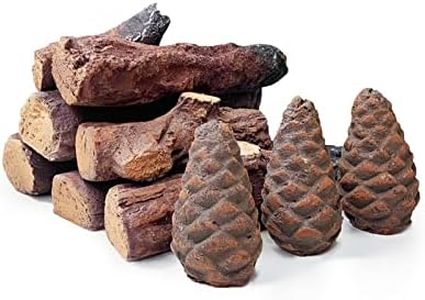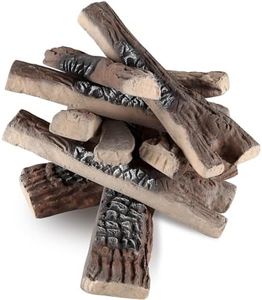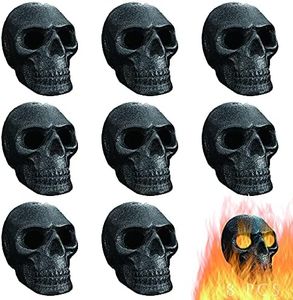We Use CookiesWe use cookies to enhance the security, performance,
functionality and for analytical and promotional activities. By continuing to browse this site you
are agreeing to our privacy policy
10 Best Gas Fireplace Logs
From leading brands and best sellers available on the web.Buying Guide for the Best Gas Fireplace Logs
Choosing the right gas fireplace logs is about balancing the style, heating needs, and installation requirements for your living space. By knowing what features matter most, you can select a set that not only looks appealing but also works efficiently and safely in your home. Consider the aesthetics, level of heat output desired, and ensure compatibility with your fireplace type to create the perfect atmosphere, whether for gentle ambiance or supplemental heating.Fuel Type (Natural Gas vs. Propane)The fuel type refers to whether the logs are designed to burn natural gas or propane. This is important because your home setup will usually be configured for one type, and the wrong logs may be unsafe or incompatible. Natural gas is typically piped directly into homes, offering convenience and often lower cost, while propane is stored in tanks and may be preferred in areas without a natural gas line. Check which connection you have at home before choosing logs, as the right fuel type will ensure proper operation and safety.
Vent Type (Vented vs. Ventless)Vent type determines how the byproducts of combustion are handled. Vented logs must be used with a working chimney or vent, and they produce a realistic flame and ambiance but release most heat outside. Ventless (or vent-free) logs burn cleanly enough to work without a chimney, providing more heat to the room but requiring you to monitor indoor air quality. Decide between authentic, aesthetic flames (vented) or higher heating efficiency (ventless), depending on whether you value atmosphere or warmth more.
Log Size and Fireplace CompatibilityLog size is the length and depth of the ceramic logs, which need to fit properly within your fireplace opening. Logs that are too large may cause safety issues, while logs that are too small might not look right. Measure the width, depth, and height of your fireplace firebox, and choose a log size that fits comfortably with a little clearance on all sides. The right fit ensures safe operation and a pleasing look.
Heating Capacity (BTU Rating)Heating capacity, measured in BTUs (British Thermal Units), tells you how much heat the logs can produce. Low BTU models are suitable for ambiance or mild supplemental warmth, while higher BTUs can heat larger spaces more efficiently. Consider the square footage you want to warm and whether your primary goal is atmosphere or supplemental heating. Select a BTU rating that matches the heating needs of your room.
Ignition System (Manual, Match, or Electronic)The ignition system determines how you turn on your fireplace. Manual and match light systems require more input from you, while electronic options can be started with a switch or remote, offering more convenience. Those who want easy, quick operation may prefer electronic ignition, while others might be comfortable with manual systems for lower maintenance. Think about your personal preference for control and convenience.
Aesthetic Style and RealismThe appearance of gas logs varies from very realistic options mimicking specific wood species to more stylized, decorative designs. Realism can enhance the atmosphere, making your fireplace look like a natural wood-burning one, while other styles might suit more contemporary settings. Choose a style that complements your room decor and matches your preference for realism or modern looks.
Material Quality and DurabilityGas fireplace logs are most commonly made from refractory ceramic or concrete with added materials for durability and authentic detail. Higher quality materials will better withstand high temperatures and aging, reducing the chance of cracking or fading over time. If you intend to use your fireplace often, prioritize logs known for durability and realistic appearance to ensure long-term satisfaction.
Safety FeaturesSafety features can include oxygen depletion sensors, automatic shut-off valves, and protective barriers. These are important to ensure that your fireplace operates safely, especially in ventless models where maintaining air quality is essential. If you have pets, children, or the fireplace will be unattended, look for safety features that provide peace of mind.
